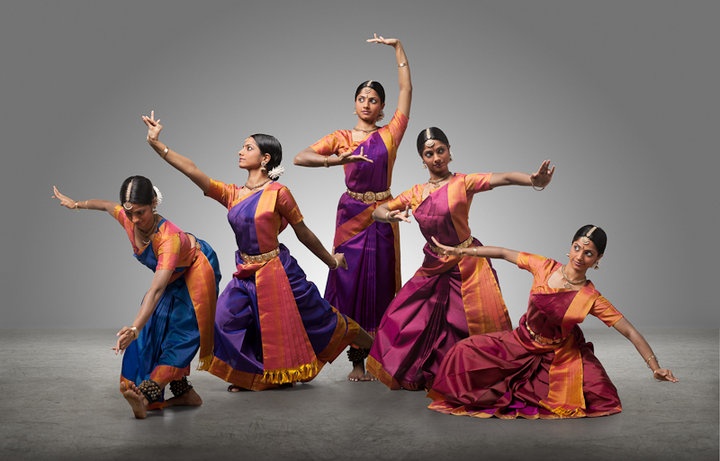Indian classical dance is an intricate and expressive art form that seamlessly integrates movement, rhythm, and storytelling. While the visual aspect of dance captivates audiences, it is the accompanying music and instruments that breathe life into each performance. Music serves as the foundation of classical dance, dictating its tempo, mood, and emotive depth. The harmonious blend of rhythm, melody, and percussion elevates the dancer’s expressions and enhances the overall experience for the audience.
The Symbiotic Relationship Between Music and Classical Dance
Music is inseparable from classical dances of India, as it provides the necessary structure and emotional depth for each performance. The beats, tunes, and ragas guide the dancer’s movements, ensuring synchronization between the art forms. Traditionally, dance performances are accompanied by live musicians, creating an interactive experience where the dancer and instrumentalists respond to each other’s cues in real time.
Indian classical dance relies on two key musical elements:
- Tala (Rhythm): The rhythmic cycle that dictates the tempo and pace of a dance performance. Different dance forms use distinct talas to create unique rhythmic patterns.
- Raga (Melody): The melodic framework that conveys emotions (rasa) and sets the mood of the performance.
Traditional Instruments Used in Indian Classical Dance
A variety of traditional instruments play a crucial role in enhancing classical dance performances. These instruments not only provide rhythm and melody but also create an immersive auditory experience that complements the dancer’s intricate movements and expressions.
1. Percussion Instruments
Percussion instruments are essential in maintaining rhythm and tempo. They help in accentuating the dancer’s footwork and creating a synchronized performance.
- Mridangam (Carnatic Tradition) – A two-headed drum primarily used in Bharatanatyam and Kuchipudi performances. It produces deep, resonant beats that enhance rhythmic precision.
- Tabla (Hindustani Tradition) – A pair of hand drums used in Kathak and other classical forms, providing complex and intricate rhythmic patterns.
- Pakhawaj – A barrel-shaped drum similar to the mridangam but predominantly used in Kathak and Odissi dance performances.
- Khanjira – A small, handheld tambourine-like instrument that adds dynamic rhythmic elements, often accompanying Bharatanatyam and Kuchipudi.
- Manjira – Small metallic cymbals played in various dance forms to keep rhythm and add a distinct metallic tone to performances.
2. String Instruments
String instruments provide the melodic foundation for classical dance performances, setting the mood and emotional depth.
- Veena – A traditional string instrument that produces rich, resonant melodies, commonly used in Bharatanatyam and Kuchipudi.
- Sitar – A plucked string instrument often used in Kathak performances, known for its distinctive sound and melodic complexity.
- Sarangi – A bowed instrument that closely mimics the human voice, adding an expressive quality to Kathak and Odissi performances.
- Tanpura – Provides a continuous harmonic drone, creating an ambient musical atmosphere for dancers.
How Music Enhances Different Classical Dances of India
Each classical dance form has a distinct musical tradition that complements its unique style, expressions, and themes.
- Bharatanatyam – Accompanied by Carnatic music, Bharatanatyam features mridangam for rhythm, veena for melody, and vocals that narrate mythological stories.
- Kathak – Rooted in Hindustani music, Kathak performances heavily rely on tabla, sarangi, and sitar to complement fast-paced footwork and graceful spins.
- Odissi – Odissi performances feature a blend of Odissi music with instruments like the pakhawaj, flute, and tanpura, creating a devotional and lyrical ambiance.
- Kuchipudi – Carnatic music, coupled with mridangam and violin, enhances the dramatic storytelling elements of Kuchipudi.
- Kathakali – This dance-drama uses chenda (drum) and maddalam (percussion) to highlight the dramatic intensity of performances.
- Manipuri – Known for its soft and fluid movements, Manipuri dance incorporates pung (a traditional drum) and flute, creating a soothing and spiritual aura.
Conclusion
Music and instruments play an indispensable role in enhancing Indian classical dance performances. The rhythmic beats, melodic compositions, and soulful harmonies create an enchanting experience that connects the performer and the audience. As the classical dances of India continue to gain recognition globally, their rich musical traditions remain at the heart of their timeless appeal, ensuring that this artistic heritage thrives for generations to come.





